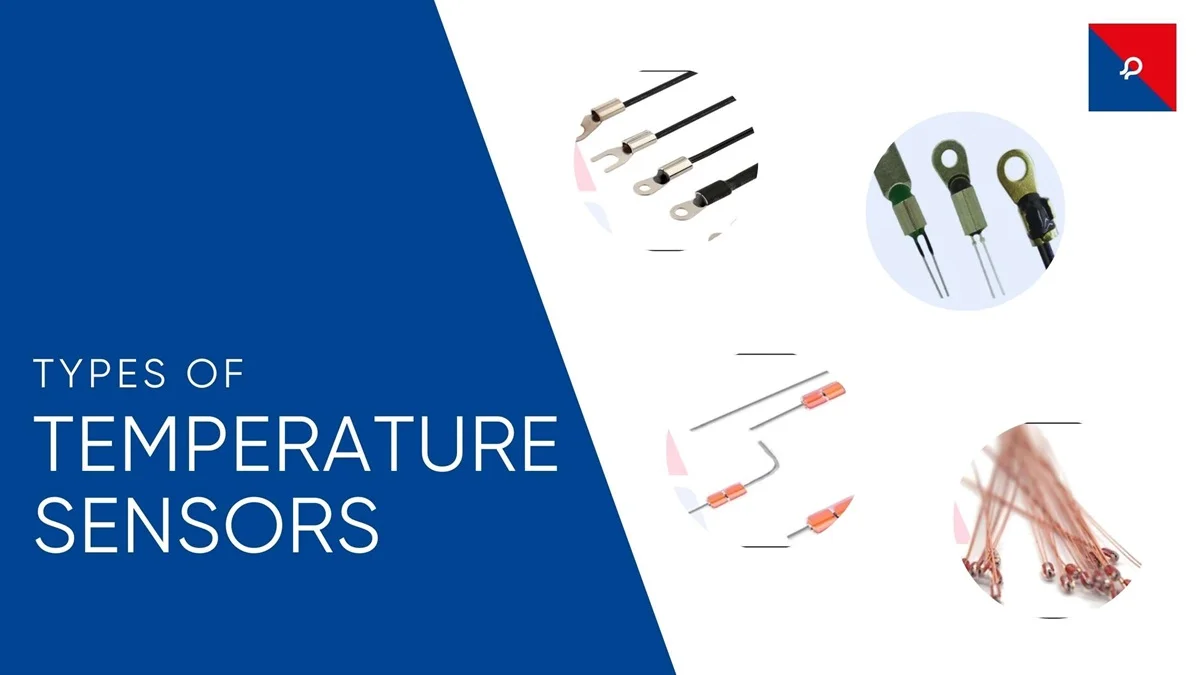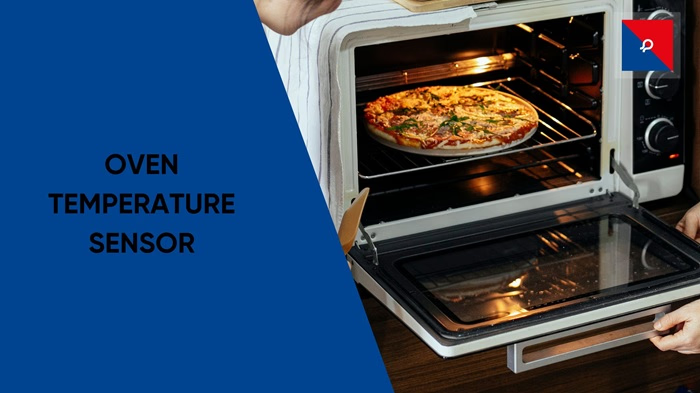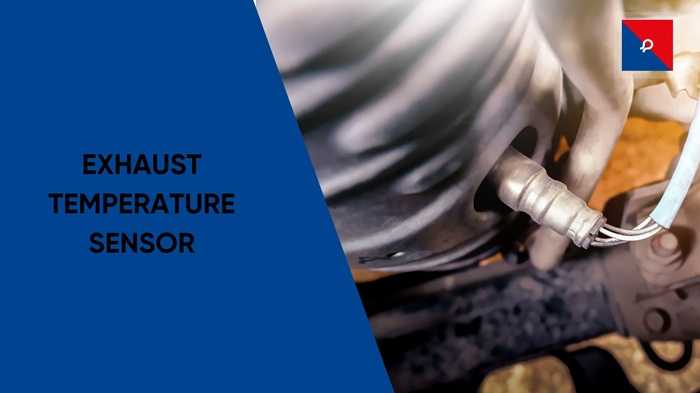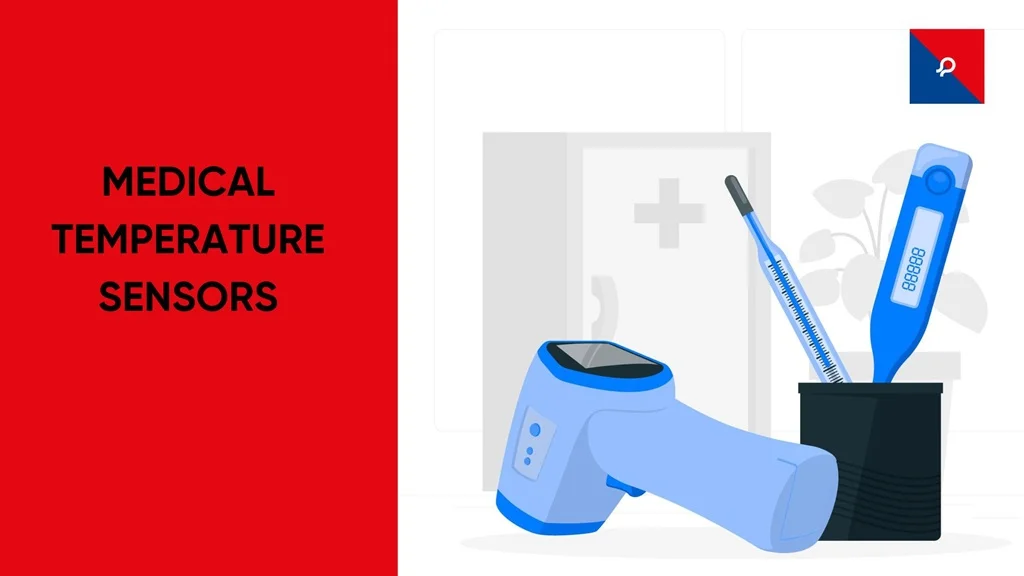
Temperature sensors are integral to the systems and devices we rely on daily. From monitoring our home appliances to ensuring safe conditions in industrial applications, temperature sensors provide precise measurements that help maintain efficiency, safety, and control. This guide will introduce the temperature sensor types and explain how each type works, including their strengths, applications, and specific examples.
What is a Temperature Sensor?
A temperature sensor is a device that accurately detects and records temperature, enabling systems to monitor and control thermal conditions. By measuring the degree of hotness or coldness within an environment, temperature sensors help maintain optimal functioning in many applications, from household devices to sophisticated industrial equipment. The sensor’s output is typically an electrical signal that reflects temperature changes, providing real-time data for immediate or stored use.
While traditional thermometers display temperature as a visible reading, advanced temperature sensors generate precise, continuous signals compatible with digital systems. These sensors are designed to detect even slight temperature shifts, which is critical in areas like automotive engineering, where they help regulate engine performance and exhaust control, or environmental monitoring, where temperature changes affect ecological assessments.
In medical devices, temperature sensors track vital signs and manage device temperatures for patient safety, while in industrial automation, they are used to control processes, ensuring efficiency and preventing equipment from overheating. This versatility and reliability make temperature sensors foundational in both everyday applications and specialized technology.
Types of Temperature Sensors
Different types of sensors fall into two main categories: contact and non-contact sensors. Below, we’ll explore each type in detail and how they work.
Before choosing a temperature sensor type, it’s important to determine whether a contact or non-contact type is suitable for the application. The primary distinction lies in whether the sensor needs direct contact with the object to measure temperature.
1. Contact Temperature Sensors
Contact temperature sensors require physical contact with the substance or object they’re measuring. They are commonly used for applications where accurate contact with the surface, liquid, or gas is possible and effective.
- Thermistors: Temperature-sensitive resistors with high sensitivity, ideal for quick-response applications like automotive and HVAC systems.
- Thermocouples: Consist of two different metals joined at one end, offering a broad temperature range. Durable and widely used in industrial and scientific settings, with J-type suited for lower temperatures and K-type for higher temperatures.
- Resistance Temperature Detectors (RTDs): Known for accuracy and stability, RTDs change resistance with temperature. Platinum-based RTDs (like PT100) are highly valued for precise measurements, especially in labs and industrial processes.
Contact sensors are effective for temperatures below 3400°F (1700°C) or above -40°F (-40°C) when direct contact is feasible.
Read on: Difference between thermistor and thermocouples
2. Non-Contact Temperature Sensors
Non-contact temperature sensors measure temperature from a distance, ideal when direct contact is impractical or potentially harmful. They use radiation emitted by the heat source to determine temperature.
- Infrared (IR) Sensors: These sensors detect surface temperature using infrared radiation, ideal for moving objects. They are common in medical thermometers, industrial monitoring, and automotive applications.
- Fiber Optic Sensors: Known for precision and resistance to electromagnetic interference, they are suited for harsh, high-voltage environments like power plants and MRI machines.
- Radiation Thermometers and Optical Pyrometers: These sensors measure thermal radiation, making them suitable for extreme temperatures, such as metal forging and other high-heat industrial processes.
- Thermal Imagers: Thermal cameras detect temperature variations across large areas, used in firefighting, environmental monitoring, and building diagnostics.
4 Common Types Of Temperature Sensors
There are four common temperature sensors used in the market:
- Resistance Temperature Detectors (RTDs)
- Thermistors (Negative Temperature Coefficient (NTC))
- Thermocouples
- Semiconductor-Based Integrated Sensors (ICs)
1. Resistance Temperature Detectors (RTDs)
Resistance Temperature Detectors (RTDs) are highly accurate and stable sensors that measure temperature by changing resistance in response to temperature shifts, typically using materials like platinum, nickel, or copper. Platinum RTDs (like Pt100) are the most popular due to their linear response and precision across a wide temperature range (-200°C to 850°C), making them ideal for scientific, industrial, and environmental applications. Thin-film, wire-wound, and coiled RTD designs cater to various settings, with thin-film RTDs offering faster response times in dynamic applications such as automotive and aerospace.
Advancements and Applications of RTDs
Recent innovations have improved RTD durability, accuracy, and integration for extreme and remote environments. Modern RTDs now feature miniaturized, wireless, and high-temperature designs, extending their use in areas like environmental monitoring, industrial manufacturing, HVAC, medical equipment, and high-heat industries. With advancements in calibration and wireless data transmission, RTDs provide real-time monitoring, making them essential in applications where consistent and precise temperature control is critical.
2. Thermistors (Negative Temperature Coefficient (NTC))
Negative Temperature Coefficient (NTC) Thermistors are highly sensitive resistors that decrease in resistance as temperature increases, offering rapid and accurate temperature readings within a narrow range, typically -50°C to 250°C. Made from materials like ceramic, these thermistors require calibration for accurate results due to their non-linear response. Their precision and responsiveness make them ideal for detecting small temperature changes, especially in applications requiring quick adjustments.
Advancements and Applications of NTC Thermistors
Recent advancements have improved NTC thermistor precision, miniaturization, and stability, allowing their use in compact and high-performance devices. Applications span across medical devices (ventilators, incubators), automotive systems (engine temperature control), and consumer electronics (overheating prevention). Flexible and robust designs now make them suitable for harsh environments, with enhanced stability and durability in industrial and HVAC applications, highlighting their adaptability in modern technology.
3. Thermocouples
Thermocouples are durable temperature sensors that generate a voltage based on temperature differences between two dissimilar metals, leveraging the Seebeck Effect. Their ability to measure a broad temperature range without external power makes them ideal for applications requiring durability and responsiveness. Popular types like K-type sensors and J-type sensors cater to various needs, from industrial processes to appliances.
- J-type sensors are ideal for lower temperature ranges and typically operate between -40°C and 750°C. They are common in food processing, laboratory experiments, and appliance manufacturing.
- K-type sensors are more versatile, with a range of -200°C to 1350°C, making them suitable for high-temperature applications, including industrial processing, gas turbine exhaust measurement, and metalwork.
Advancements and Applications of Thermocouples
Recent advancements include extended temperature ranges, enhanced accuracy, miniaturization, and wireless capabilities, broadening thermocouples' applications across fields such as industrial manufacturing (metal forging, gas turbines), automotive/aerospace (engine and exhaust monitoring), medical devices, and home appliances. Enhanced coatings and wireless monitoring further increase their adaptability for extreme and remote environments, solidifying their role in modern temperature measurement solutions.
4. Semiconductor-Based IC Temperature Sensors
Semiconductor-Based Integrated Circuit (IC) Temperature Sensors work by detecting voltage differences across two temperature-sensitive transistors, providing a linear temperature output that’s easy to interpret and integrate with digital systems. This IC type temperature sensor is known for their compact design, which allows them to fit into small devices like wearables and IoT gadgets. Offering both analog and digital outputs, IC sensors can directly communicate with microcontrollers through common interfaces like I2C and SPI. This versatility, combined with high accuracy and efficient power usage, makes them ideal for modern electronics and applications where real-time temperature data is crucial.
Advancements and Applications of IC Temperature Sensors
Recent advancements include improved miniaturization, extended temperature range (-55°C to 150°C), low power use, and wireless connectivity, enhancing their utility across fields such as consumer electronics (overheating prevention in devices), automotive systems (engine and battery monitoring), industrial automation (process control), and medical wearables. IC sensors are crucial in modern technology for accurate, efficient temperature management in diverse environments.
Applications of Temperature Sensors
Temperature sensors have applications across a diverse set of industries:
- Automotive: Sensors monitor engine temperatures, ensuring efficient performance and safety. Infrared and thermocouple sensors are used for real-time feedback on exhaust systems.
- Healthcare: In medical devices like MRI machines and ultrasound equipment, precise temperature sensors (RTDs, thermistors) ensure patient safety and equipment reliability.
- Environmental Science: Sensors monitor temperatures in soil, water, and air, allowing scientists to track climate change and environmental conditions.
- Industrial Manufacturing: Thermocouples, fiber optic sensors, and RTDs manage temperature in processes that involve high heat, such as metalworking or glass production.
Conclusion
In conclusion, selecting the right temperature sensor is critical and should align with the application’s specific requirements, such as temperature range, environmental conditions, desired response time, and whether direct contact is feasible or safe.
The choice between contact and non-contact sensors is essential, as each type offers unique advantages suited to different scenarios—from quick, precise contact sensors for stable environments to advanced non-contact sensors ideal for high-temperature or hard-to-reach areas.
JR Sensors stands out by offering a diverse portfolio of temperature sensors, including models optimized for applications in washing machines, HVAC systems, automotive systems, industrial manufacturing, and environmental monitoring. These sensors are designed with durability and precision in mind, ensuring long-term reliability and accuracy, even in challenging conditions. Whether you need sensors that offer rapid response, broad temperature ranges, or specific environmental tolerances, JR Sensors provides options tailored to meet these demands.
Additionally, our expert customer support is available to help clients choose the right sensor solution, offering insights into installation, calibration, and maintenance to maximize sensor performance. For personalized recommendations, we provide expert guidance through their customer support.
Frequently Asked Questions
1. What should I consider when selecting a temperature sensor?
2. Which Temperature Sensor is the Most Accurate?
3. How often should temperature sensors be calibrated?
4. Can temperature sensors work in hazardous environments?
5. What can cause sensor failure, and how can it be prevented?

Burnt Biscuits? Blame the Sensor – The Hot Truth About Your Oven’s Temperature Troubles
If your oven’s cooking like it’s got a mind of its own, your temperature sensor might be the silent saboteur. From half-baked casseroles to scorched cookies, we break down how this little sensor works, why it matters, and how to fix it—without losing your cool (or your dinner). A fun, practical guide that’s just as useful as it is digestible.

Hot Stuff: Why Your Engine Can’t Live Without an Exhaust Temperature Sensor
Think exhaust sensors are just another car part? Think again. These tiny guardians track fiery exhaust temps, protect turbos, keep emissions in check—and even help you pass that dreaded test. Dive into the witty, down-to-earth guide on how EGT sensors silently save your engine (and your wallet) every day. Bonus: You’ll sound like a car guru by the end.

Tiny Tech, Big Impact: Inside the World of Medical Temperature Sensors
Discover how medical temperature sensors work, why they're crucial in healthcare, and how health sensors are transforming modern medical diagnostics. From wearable tech to high-precision devices, learn about the different types of temperature sensor medical devices used today.